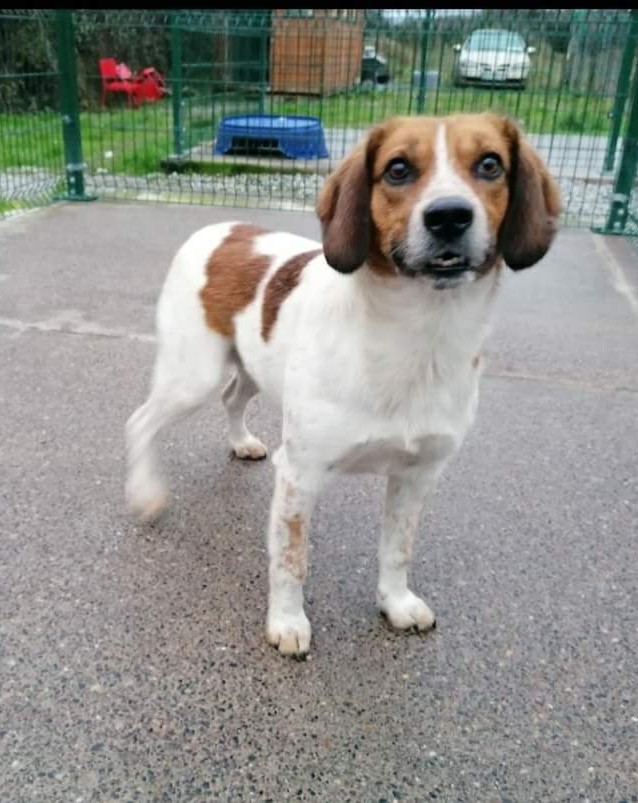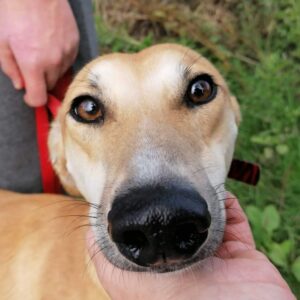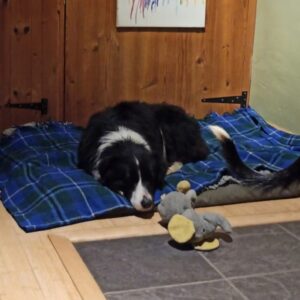Teaching your dog a solid “stay” or “wait” command is beneficial to the daily routine and a useful tool you will no doubt use all the time. Whether you are asking your dog to stay when walking through a doorway so you can walk through first and not be pulled through by an excited dog or asking for a polite “sit and stay” while prepping your dog’s food, the uses of teaching your dog a solid stay is hugely beneficial as well as teaches your dog to be mindful of your guidance and teaches them manners to be a well-rounded, more manageable dog! Like all training cues, it’s important that rather than having long sessions where you and your dog can get frustrated or bored, keep sessions only a few minutes long a couple of times a day at a time. Never end a training session in a negative sense always end on something positive and rewarding. It’s important to understand, too, that this will be taught slowly and with patience over time, nothing with be learned in just one session over a few minutes.
To begin teaching the “stay” command, like most training, it begins at home or in the garden in an area with very little distraction. If your dog is excitable, it might be beneficial to have a play or walk first. Start by asking for commands that they may know first like “sit” or “down”.
Decide what command you want to use like “stay” or “wait” and stick to it to avoid any confusion for your dog. Once your dog gets into the sit or lie down position after you give them the first command, reward and praise them. Next, while they are in the first position, give them the cue “stay” with a clear hand signal of your hand out and your palm facing your dog straight on. Take your hand away, and reward your dog straight away before they move.
Repeat this step five times, rewarding when your dog doesn’t move when you give the cue. Once your dog has mastered this step, it’s time to move on to the next one.
Give your dog the cue again with the hand signal, except this time take away eye contact for a second or two and reward your dog if they stay in place. This is a good practice to reinforce what the cue “stay” means as your dog values your attention hugely and this will test their stay. Once your dog is comfortable with this step, you can move on to the next one.
Next, you want to increase the length of time your dog will stay in position on command before you reward them. Do not rush this step, especially if you’re in the first or second training session for teaching stay with your dog. Start by increasing the length of time by a second or two and only if your dog is successful at shorter increases in time and comfortable with that length of time, then move on to increase it by more time. If your dog is comfortable with this step, it’s time to move on to the next.
This step is about introducing distance between you and your dog in the stay position. Start by asking for a stay with the hand signal, and take a step back before returning to your dog immediately and treat and reward them if they haven’t moved. Once they’re comfortable with this, start taking two steps, always return straight away to them to reward them if they haven’t moved by increasing by another step away from your dog. Then gradually increase more distance between you and your dog. If they are struggling with the distance, go back a step or two and slowly increase it by making sure your dog is comfortable with small distances you take first.
Once you can move around your dog freely while they remain in a stay, see if you can quickly pop out of sight and then come back to reward them. You could also begin to add in distractions while practicing the stay in areas with more distractions like an estate green on the way back from a walk. As with all the other steps, build things up gradually, and if habits start to slip, go back and build up again. Once your dog is comfortable being asked to “stay” in a familiar environment, you can change location and start the training again. You can also teach your dog a release word, like ‘OK’ to let them know that they can leave the stay. However, you should always return to your dog to let them out of the stay. Don’t recall your dog out of a stay because this could confuse them.





